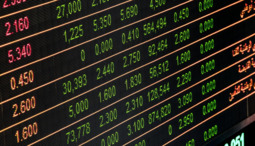- On
- 21 Nov 2023
- Reading time
- 3 minutes
When it comes to trading, there are various instruments available to investors. Each instrument has its unique characteristics and can offer different profit opportunities. This article will explore some of the most common trading instruments and provide a basic understanding of how they work.
Index Futures
IIndex futures are contracts that allow traders to speculate on the future value of a specific stock market index. One popular index future is the US Tech 100 Index, which represents the performance of the top 100 technology companies listed on the Nasdaq stock exchange. By trading index futures, investors can gain exposure to the overall performance of a specific market sector without having to buy individual stocks.
Forex
The foreign exchange market, also known as the forex market, allows traders to buy and sell different currencies to profit from changes in their values. It is the largest and most liquid market in the world. By closely monitoring economic and political factors that influence currency movements, traders can identify opportunities to buy a currency when it is undervalued and sell it when it becomes overvalued.
This practice, known as currency trading or forex trading, requires knowledge, analysis and risk management skills. Traders can use various strategies, such as technical analysis and fundamental analysis, to make informed decisions and maximize their potential profits. However, it is important to note that trading in the forex market carries risks, and traders should be prepared to handle potential losses as well.
Stocks
Stocks, also known as equities, represent ownership in a company. Trading stocks allows investors to buy and sell shares of individual companies, allowing them to potentially benefit from the growth and success of those companies. From construction companies to the beauty and cosmetics industries, there are many opportunities in different industries to buy stocks.
By investing in stocks, individuals can become partial owners of businesses and have the potential to earn profits through capital appreciation and dividends. It is a way for investors to diversify their portfolios and potentially generate wealth over the long term. Stock prices can be influenced by a variety of factors, including company performance, industry trends and market sentiment.
Energies
Energies, such as crude oil and natural gas, are important commodities that play a crucial role in the global economy. Investors can make predictions about how these commodities' prices will change in the future by trading energy futures. Factors such as supply and demand, geopolitical events and weather conditions can impact energy prices. Trading energies can be volatile but can also offer significant profit opportunities.
Precious Metals
Precious metals, such as gold and silver, have been valued for their beauty and rarity throughout history. These metals are often seen as a safe haven investment during times of economic uncertainty. By trading precious metals, investors can profit from price swings brought on by global economic conditions, inflation and currency fluctuations. However, before diving into trading precious metals, it's important to educate yourself about the market dynamics, supply and demand factors and price trends. Stay updated with news and events that can impact the prices of precious metals.
Agricultural Commodities
Agricultural commodities include products such as corn, wheat, coffee and soybeans. Weather, international demand and governmental regulations are some of the factors that affect these commodities and can provide opportunities for investors to profit from price fluctuations. Trading agricultural commodities can be appealing to investors looking to diversify their portfolios and take advantage of trends in the agricultural sector.
Cryptocurrencies
From the laughingstock of Wall Street to a pending spot ETF from BlackRock, the largest asset manager in the world, cryptocurrencies have come a long way since Bitcoin first came onto the scene following the 2008 financial crisis. These digital currencies operate on blockchain technology and offer decentralized and secure transactions.
The price of cryptocurrencies can fluctuate greatly, depending on many factors including regulatory changes, market sentiment and technological breakthroughs. That's why it can be a good idea to implement risk management strategies such as limiting possible losses by placing stop-loss orders and collecting profits at predefined thresholds.
Conclusion
Understanding the basics of different trading instruments is crucial for investors who want to balance their portfolios and benefit from various market opportunities. Whether it's index futures, forex, stocks, energies, precious metals, agricultural commodities, or cryptocurrencies, each instrument has its unique characteristics and factors that can impact its price. By gaining knowledge and experience in these different instruments, traders can make informed decisions and potentially profit from their investments.


